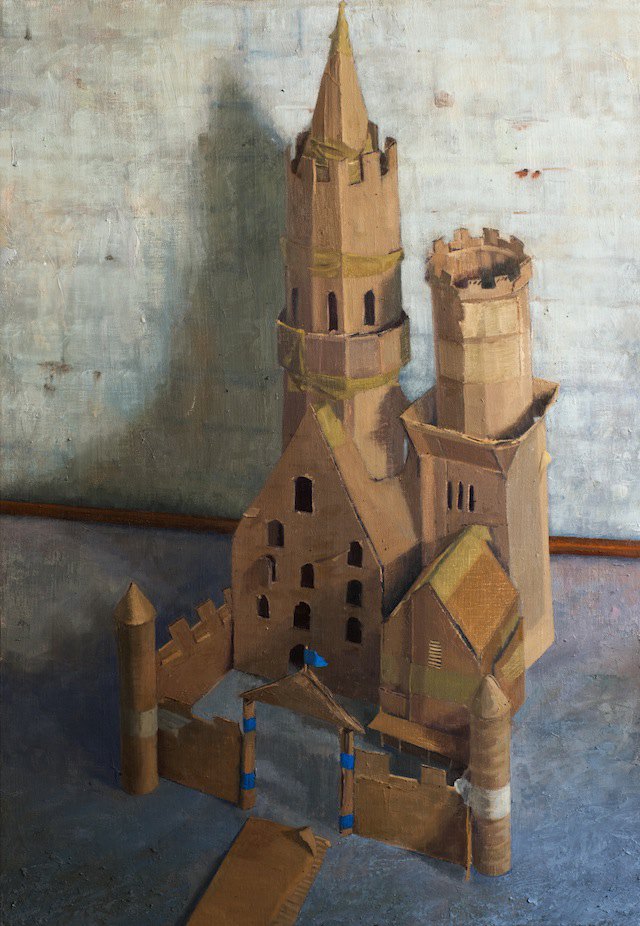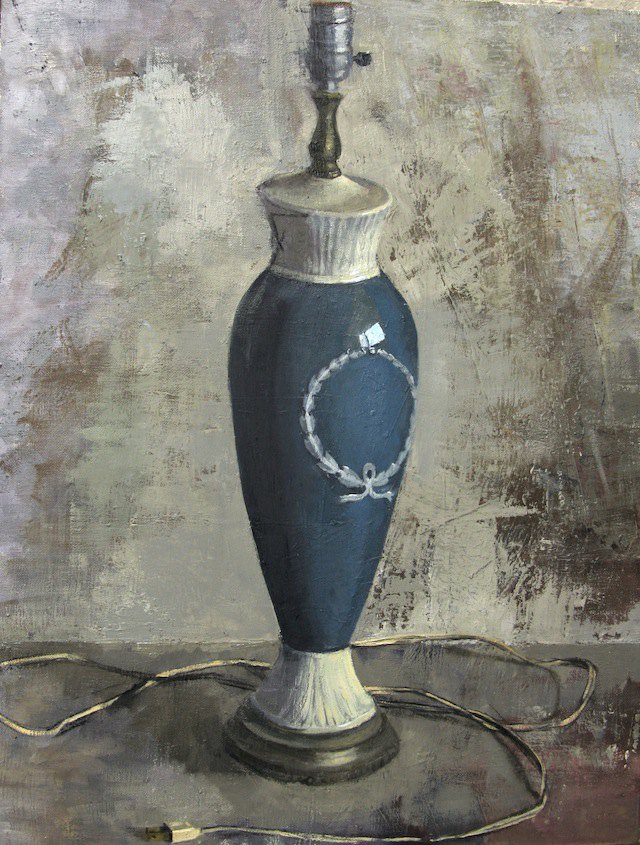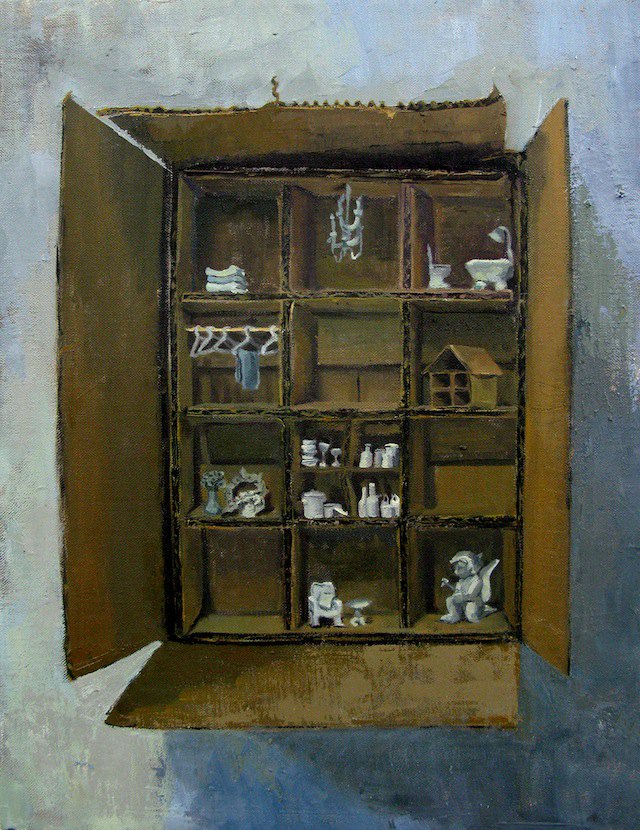[contextly_auto_sidebar id=”OeUVcJ7UtpPg8O8mzhN8sxDR75EoBT93″]

Avital Burg, Cardboard Castle (courtesy of Slag Gallery)
A sense of recognition draws you to the canvas. Something you’re visually unaware of makes you feel comfortable, the way you’re not quite aware that the subtle smell of cinnamon in a cafe is reminding you of home. You’ve never felt a strong connection to the pale ladies of Dutch masters, adorned in enormous ruffled collars, ornate robes and golden curls, living in a time long ago and a land far away. But in artist Avital Burg‘s solo show “Standing on Cardboard” at Slag Gallery, something feels familiar. You take a closer look, and you’re whipped back into the present. You take a closer look, and realize within the luscious brush strokes and perfect portraiture, between the gorgeous shading of a large white collar upon a stoic young woman, is the tiny binder clip you were fiddling with all day in your cubicle.
We grow up trying to define the world around us based on the familiarity and comfort, a home base. We connect an identity to our parents’ last name, grandma’s pearls, dad’s box of post cards, mom’s perfume, or grandpa’s war stories, to provide some sort of basis for who we are when we go out into the world. For Avital Burg, growing up in the Middle East while trying to make sense of her European roots, hearing tales of kings, queens, and castles, seems to have laid the groundwork for some nostalgic and remarkable work. She interprets her family’s heritage through her paintings
Eleanor the Princess of McGuinness (Courtesy of Louis-Dreyfus Family Collection)

The overall point of view in the gallery is refreshing in it’s subtleties. Tiny still lifes of the mundane wrestle with past and present, as the most common present day objects — a somewhat deflated water bottle, a spray bottle half full of green liquid, and a red solo cup of tea — are elevated and painted with the respect and expertise of a baroque master. The technical skill in which the items are crafted also contributes to the collection’s sense of whimsy. We can’t help but smile as we spot the clumsy unplugged cord winding out of a painting of a lamp that’s treated with the same attention to detail, shading, and consideration of light as a painting of an ancient Roman artifact.
(Courtesy of Louis-Dreyfus Family Collection)

In a way, the artist is communicating with her past, in the same way we may feel connected to a long gone relative when we bake their famous family recipe, or listen to their 45s. Her style of painting invites that conversation as her visible yet muted brush strokes form castles, roses and figurines, as so many renaissance painters have done before her. In this way they are one. However, her castles are not so traditional, and her flowers do not sprout from the most exquisite vases. Burg lets us live in this world of old masters while keeping us anchored in the present when she paints large canvases of a castle made with cardboard and masking tape that she makes in her studio, with no attempt to hide it’s arts-and-crafts-like construction. Instead of a painting of a china cabinet with treasures collected from all over the world, we see a wall mounted cardboard box exhibiting small porcelain prosaic home items, like hangers in a closet and tiny dishes in a cabinet, all on display in their miniature corrugated home. We see a bundle of delicate pink roses, sprouting petals painted with such fragility it’s as if we can see through them, clumsily fanned apart in a vase of Fed-ex boxes.
(Courtesy of Private Collection)

By painting things like exposed masking tape, revealed cardboard ridges, and by keeping the spotlight on garden variety objects with the attention, dedication, and skill of the most renowned painters, Burg emphasizes the difficulty in seamlessly interpreting the life of her family’s past and the life of art’s past in present day. She allows us to travel back in time to a romantic era where paint on canvas, still life and portraiture were among life’s absolute necessities through her style, while rooting us in the present with the banalities of the everyday that we search for in times of discomfort or uncertainty. The unplugged cord, the binder clip, the discarded box, grandma’s pearls, dad’s box of post cards, mom’s perfume, grandpa’s war stories, comfort, familiarity, connection; Burg shows us how we interpret the world around us while trying to comprehend a familiar past.
“Standing on Cardboard: Avital Burg” opened February 28, and will be on view until April 6, Thursday-Saturday, Sunday by appointment only, 1-6PM, at Slag Gallery at 56 Bogart in Bushwick.


